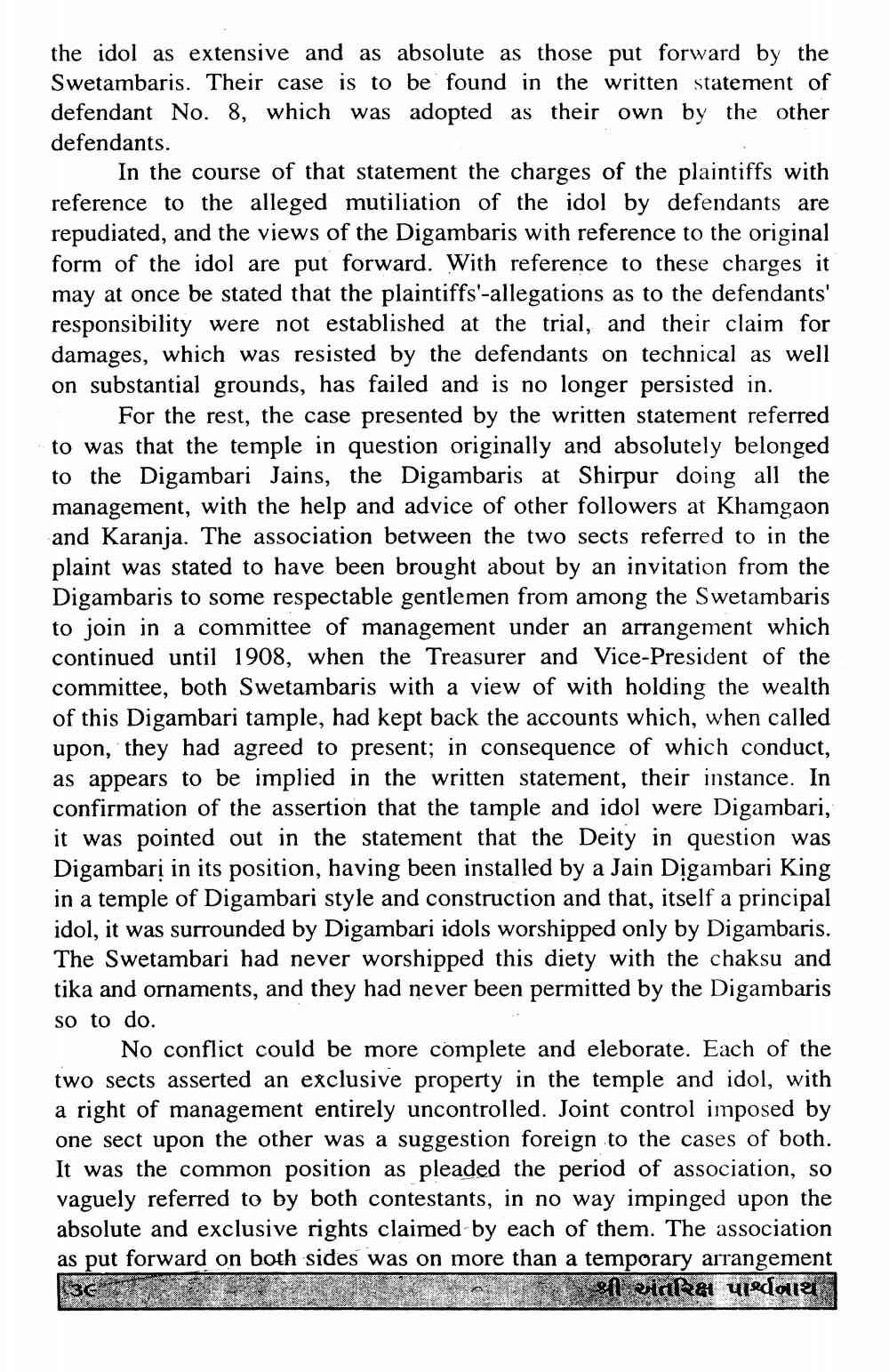________________
the idol as extensive and as absolute as those put forward by the Swetambaris. Their case is to be found in the written statement of defendant No. 8, which was adopted as their own by the other defendants.
In the course of that statement the charges of the plaintiffs with reference to the alleged mutiliation of the idol by defendants are repudiated, and the views of the Digambaris with reference to the original form of the idol are put forward. With reference to these charges it may at once be stated that the plaintiffs'-allegations as to the defendants' responsibility were not established at the trial, and their claim for damages, which was resisted by the defendants on technical as well on substantial grounds, has failed and is no longer persisted in.
For the rest, the case presented by the written statement referred to was that the temple in question originally and absolutely belonged to the Digambari Jains, the Digambaris at Shirpur doing all the management, with the help and advice of other followers at Khamgaon and Karanja. The association between the two sects referred to in the plaint was stated to have been brought about by an invitation from the Digambaris to some respectable gentlemen from among the Swetambaris to join in a committee of management under an arrangement which continued until 1908, when the Treasurer and Vice-President of the committee, both Swetambaris with a view of with holding the wealth of this Digambari tample, had kept back the accounts which, when called upon, they had agreed to present; in consequence of which conduct, as appears to be implied in the written statement, their instance. In confirmation of the assertion that the tample and idol were Digambari, it was pointed out in the statement that the Deity in question was Digambarį in its position, having been installed by a Jain Digambari King in a temple of Digambari style and construction and that, itself a principal idol, it was surrounded by Digambari idols worshipped only by Digambaris. The Swetambari had never worshipped this diety with the chaksu and tika and ornaments, and they had never been permitted by the Digambaris so to do.
No conflict could be more complete and eleborate. Each of the two sects asserted an exclusive property in the temple and idol, with a right of management entirely uncontrolled. Joint control imposed by one sect upon the other was a suggestion foreign to the cases of both. It was the common position as pleaded the period of association, so vaguely referred to by both contestants, in no way impinged upon the absolute and exclusive rights claimed by each of them. The association as put forward on both sides was on more than a temporary arrangement શ્રી અંતરિક્ષ પાર્શ્વનાથ




